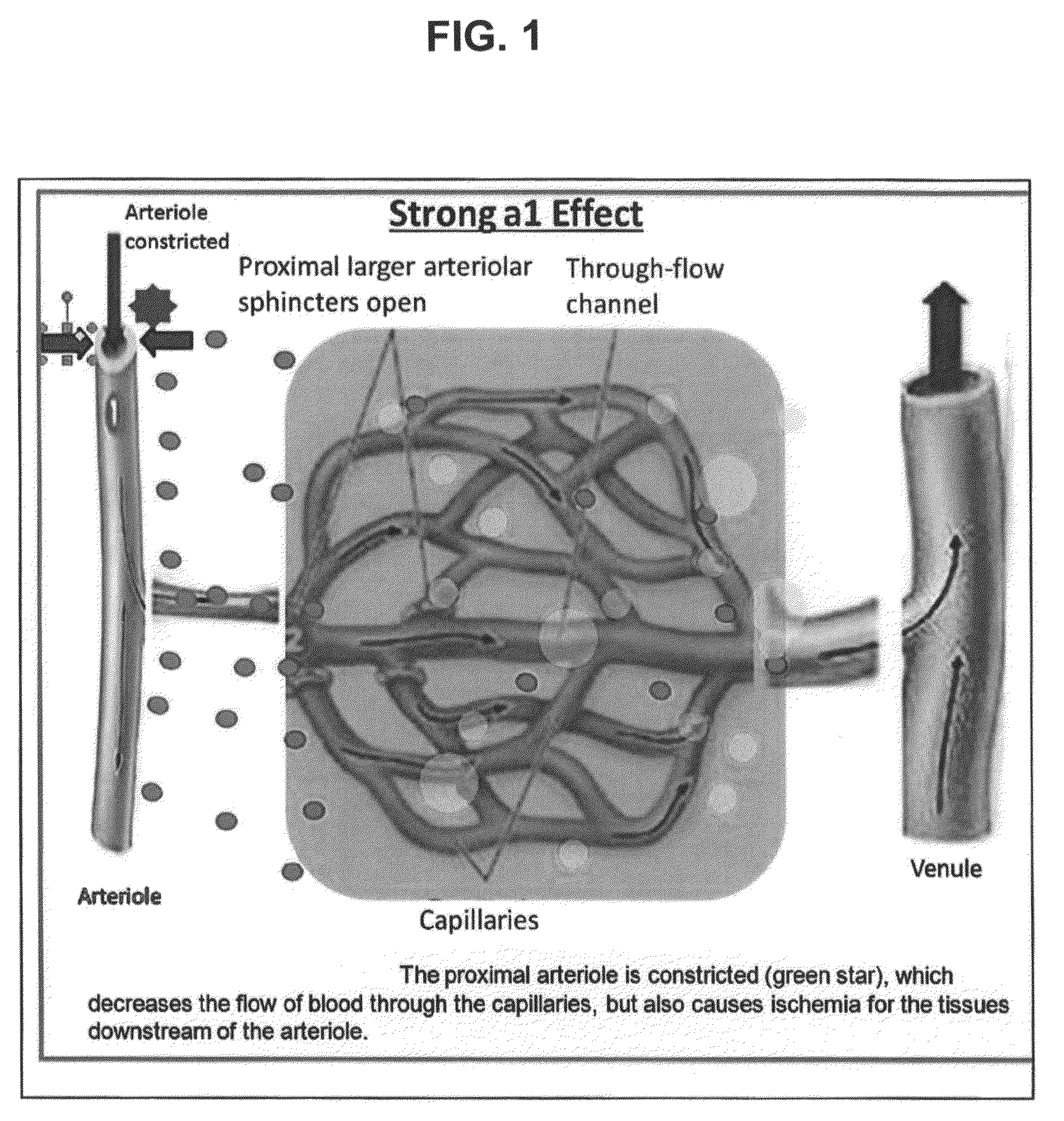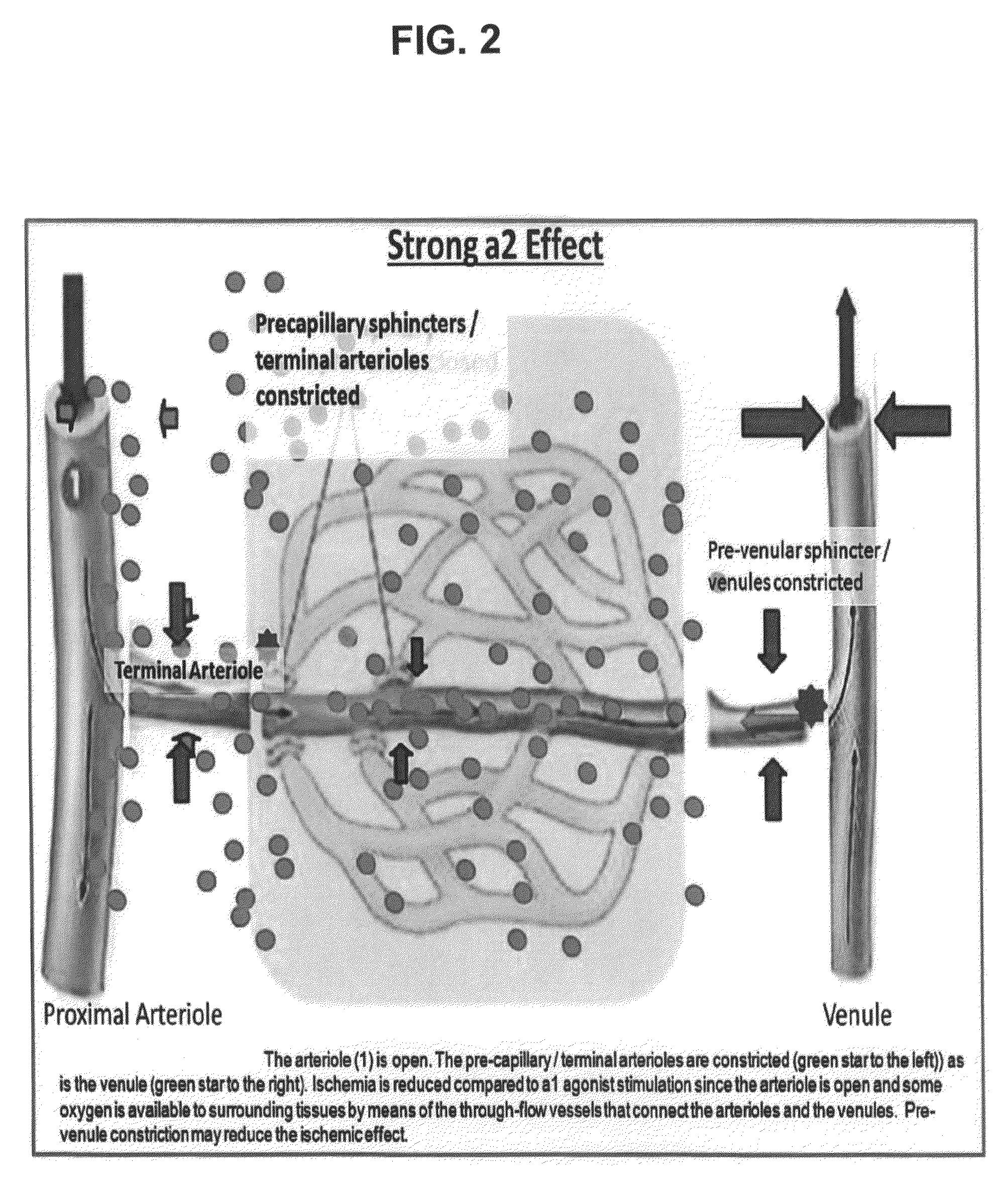Compositions and methods for ophthalmic delivery of nasal decongestants
a technology of nasal decongestants and compositions, applied in the direction of biocides, drug compositions, peptide/protein ingredients, etc., can solve the problems of inconvenience and suffering of many patients, and achieve the effect of reducing nasal congestion and nasal decongestion
- Summary
- Abstract
- Description
- Claims
- Application Information
AI Technical Summary
Benefits of technology
Problems solved by technology
Method used
Image
Examples
example 1
Ipsilateral Ophthalmic / Nasal Effectiveness Test
[0054]11 individuals were asked to assess the patency of each nostril by alternately closing one. They were then given 0.025% brimonidine topically to one randomly selected eye. After 10 minutes each nostril was alternately closed to assess the patency of the contralateral nostril and compare to its patency before applying brimonidine to the eye. 9 of the 11 patients experienced a noticeable increase in patency in the ipsilateral (i.e., on the same side as the eye) nostril, but not in the contralateral (on the opposite side of the eye) nostril. Nasal patency refers to a basic evaluation of the degree to which a nostril is open (i.e. unblocked).
[0055]Thus, this example demonstrates that ophthalmic delivery of nasal decongestants can be used to achieve significant drug concentrations in nasal turbinates, as drug flows through the nasolacrimal duct into the nasal turbinates.
example 2
Effect of Brimonidine on Increasing Whiteness of an Eve and Nasal Decongestion
[0056]Eight (8) human subjects were administered 0.025% brimonidine. The subjects were administered with the drug in one eye and then asked to assess themselves in the mirror to see if they perceived a difference in conjunctival hyperemia between eyes. The drug was administered around 9:15 am. The assessments were made 5 minutes after the administration and 4 hours after the administration. After the four hours assessment, the drug was re-administered.
[0057]The results of the experiment are as follows. At the initial 5 min assessment, eight of eight subjects reported reduced hyperemia and increased whiteness in the eye to which brimonidine was administered. At the four hour assessment, eight of eight subjects reported reduced hyperemia and increased whiteness in the eye to which brimonidine was administered. Also, at the four hour assessment, six of eight subjects reported reduced nasal congestion in the n...
example 3
Effect of Brimonidine on Increasing Whiteness of an Eve and Nasal Decongestion
[0059]Five (5) human subjects which stated that they had no previous nasal breathing problems took part in the experiment, of whom three human subjects returned the records.
[0060]1 drop of 0.025% brimonidine was applied to the right eye of each patient. In all patients, the right eye has become whiter. Then, the breathing function was measured in each nostril separately 10 minutes later. Then, 1 dose of 0.0045% brimonidine nasal spray was applied into the left nostril and the ease of breathing was again measured in each nostril separately 10 minutes later.
[0061]Following the administration of 0.025% brimonidine to the right eye, all three patients reported reducing nasal congestion in the right nostril. Following the administration of 0.0045% brimonidine nasal spray into the left nostril, all three patients reported reduced nasal congestion in the both nostrils. As this Example demonstrates, administration...
PUM
| Property | Measurement | Unit |
|---|---|---|
| binding affinity | aaaaa | aaaaa |
| concentration | aaaaa | aaaaa |
| pH | aaaaa | aaaaa |
Abstract
Description
Claims
Application Information
 Login to View More
Login to View More - R&D
- Intellectual Property
- Life Sciences
- Materials
- Tech Scout
- Unparalleled Data Quality
- Higher Quality Content
- 60% Fewer Hallucinations
Browse by: Latest US Patents, China's latest patents, Technical Efficacy Thesaurus, Application Domain, Technology Topic, Popular Technical Reports.
© 2025 PatSnap. All rights reserved.Legal|Privacy policy|Modern Slavery Act Transparency Statement|Sitemap|About US| Contact US: help@patsnap.com


